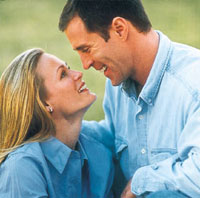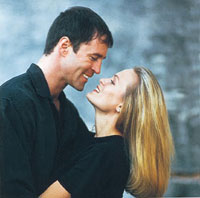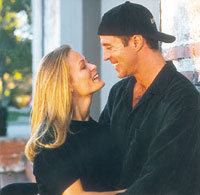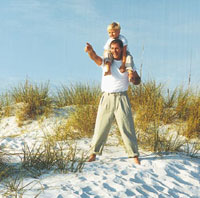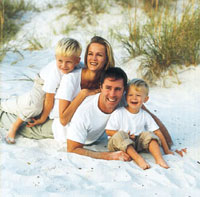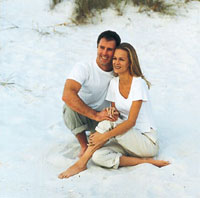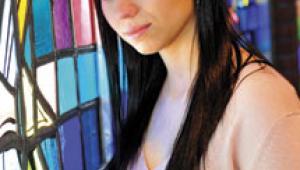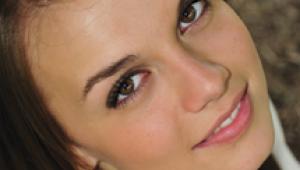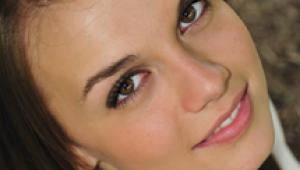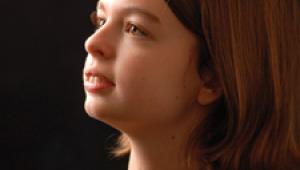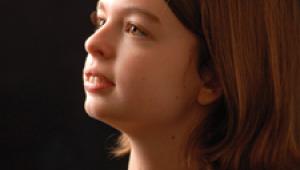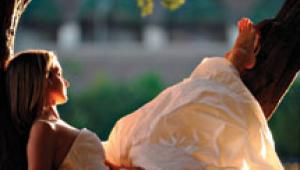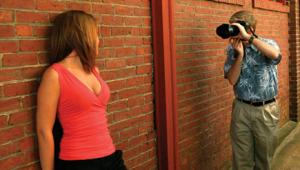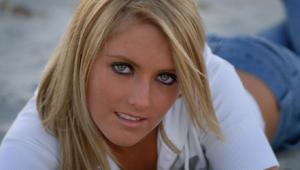Wedding & Portraiture
Kodaks New Portra 800 Film
I tried it. I liked it. I loved it and so did Kodak. They used this test photograph of mine recently in a 30/30 size to display the quality of their new Portra 800 film. It's also available in 35mm, 120 and 220 rolls. I don't usually get excited about new films, but this was different. What I liked the most was the beautiful skin tones that the film preserved, even with its high-speed ISO 800. It also has incredibly fine grain. I would never have thought it possible to achieve all these fine qualities, but I saw it all there...both in the 5/5s that were made from my 21/4 negatives and the 30/30 print that was hanging in the Kodak Portrait Gallery at a recent convention. I had a limited time span in which to make the tests and return the results to Kodak, so I called a couple of my favorite models, Austin and Danielle, and took them to familiar surroundings. I worked the film all the way from bright sunshine to dusk and beyond. This final shot of the day is the one selected by Kodak (shown above), because it showed the properties. |
||||
I began by bringing the couple in Photo 1 underneath a covered porch that was open to my right and behind me. They were deep within a corner of a 90° angle of the building. The light was strongest from camera-right and the fill light was natural, ambient light coming in from behind me. I used split lighting on their faces utilizing the light coming in from the side. I positioned my Westcott Monte/Illuminator/reflector camera-right and played with it to pick up some outside light and wrap it around onto the right side of their faces. That was all there was to it. I used a 150mm lens on my Hasselblad and shot at a high shutter speed. That let me open my lens all the way with the 800 film to reduce the depth of field, so that nothing would be sharp except the two of them. No matter how closely you look at these images, you'd never believe that they were made on high-speed film. The skin tones are magnificent. The 800 speed film enabled me to use a shutter speed that made it extremely comfortable for me and the models to work without having to be afraid of either camera or subject movement. It was a pleasure. Almost like working outside in bright sunshine at 1/125 of a sec. |
||||
Out from under cover for Photo 2, I was a little concerned about getting too sharp of a background, because I was stopping the lens down more. To avoid the depth of field that I would gain I still kept the lens open wide, photographed at a higher shutter speed and changed to a longer, 350mm lens. What a background it made of the grass behind them. Completely out of focus--just what I wanted. The extra speed of the film was working beautifully for me, even in much brighter light. |
||||
As it got later in the day, I moved to another location where I had been attracted to the textured walls of an old building waiting to be demolished. In a parking lot beside the building I posed the couple for Photo 3. I used all natural light and again threw the background out of focus using a wide open aperture on my telephoto 350mm lens. Once more, the speed of the new film worked beautifully. |
||||
Just around the corner I came into slightly brighter light, but we were deep in the blue shadows of the building. Jerry, my new local assistant, was playing around with my reflector and picked up some late afternoon sunlight pretty far from where I was photographing and brought the warm glow of the setting sun onto their faces in Photo 4. The new 800 film was sensitive to the slight shift in color between the light on their faces and the light on the background. I was very pleased with the resulting images. |
||||
Very late that same day we went to the last location, where I sat them down on an old swing beneath a huge tree (Photo 5). This, I thought, would be a great test of the 800 speed film and it really came through. Look at the warmth of their skin tones, even in the very last bit of daylight that was left that evening. It wasn't as if there was a beautiful setting sun that was reflecting off their faces. They were truly in almost complete darkness. But just look at the beautiful skin tone that I was able to retain in their faces. The next day I took Austin and Danielle to the beach with her two sons. They had posed for me before, so I knew that we would be in for a fun time. |
||||
While the sun was still strong and bright in the sky I created Photo 6, still testing to see how the film would perform in all kinds of lighting conditions. I didn't use a flash because I wanted to see how the film would adapt to the harsh contrast of the highlights and shadows. I was not disappointed at all. |
||||
Coming in closer for Photo 7, I was curious to see how much detail I could retain in the hair and clothing of the children in the bright, direct sunshine. A fill flash, one f/stop under the ambient light was just perfect for keeping the natural look of the beach setting. I used a 150mm lens to frame just what I wanted in my Hasselblad viewfinder. The kids were a little rambunctious, so it was easier to get a fun shot of them looking at each other, rather than directing their attention toward the camera. I quickly had Austin and Danielle look at the children, so that I could keep the light on the front of their faces. Even in my anxiety to get the shot, I still took the time to place the horizon line above their faces, so that they wouldn't look "cut" by the straight line across the photograph. |
||||
Once more, the sun was rapidly setting. For Photo 8 I was able to use the last bit of daylight as a main light without anyone squinting. Again, I was thrilled to have the distinct advantage the faster 800 speed film as the daylight diminished to almost nothing. I was working fast now, as there wasn't much time left. Once more I assembled the family group, working at 1/60 of a sec, rather than the slower speed I had been using with a slower film and it paid off again. |
||||
As the light dwindled to almost nothing, I was still able to squeeze out Photo 9. As you can see by the lack of shadows, the lighting was almost completely flat, but just look at the detail, color, separation, and clarity that the film retained in almost no light at all. No one in our group could imagine that we would have gotten the quality images that were obtained that late in the day. The final clincher, of course, was the sunset picture that Kodak selected to show the properties of the film in really low-light conditions. Medium format or 35mm, it doesn't matter. The film is fantastic. What a thrill. You can read more about the new film on www.Zuga. net. |


